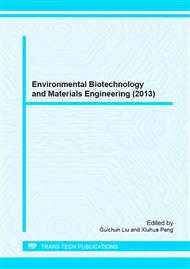p.3
p.11
p.15
p.19
p.26
p.33
p.38
p.43
p.47
Study and Analysis of the Impacts and Mechanisms of Intermittent Aeration and Movement Degree of Membrane on the Permeate Flux in a Submerged Membrane System
Abstract:
This task studies the impacts and mechanisms of intermittent aeration and movement degree of membrane on the permeate flux in a submerged membrane system. The contents includes: Analysis of the effects of intermittent aeration on the membrane performance, modelling the experimental results and find out the mechanisms; Analysis of the effects of different movement degree of membrane on the permeate flux during the intermittent aeration process, modelling the experimental results and find out the mechanisms; Determination of the optimum membrane running conditions, including the most effective intensity of gas sparging, the most effective intermittent aeration cycle time and the most effective movement degree of membrane, etc. It shows that intermittent aerations between backwashing processes can significantly improve the membrane performance; the change of the movement degree (L/H),which means the ratio of the effective length and the effective vertical height) of membrane can affect the influences of intermittent aeration on the membrane performance significantly; the most effective intensity of gas sparging is 1.5L/h; the most effective intermittent aeration cycle time is 30min; the most effective movement degree of membrane is 1.07.The result of the research is good for the selection of operation condition and determination of running parameters of ultrafiltration membrane water supply process.
Info:
Periodical:
Pages:
26-32
Citation:
Online since:
September 2013
Authors:
Price:
Сopyright:
© 2013 Trans Tech Publications Ltd. All Rights Reserved
Share:
Citation:



